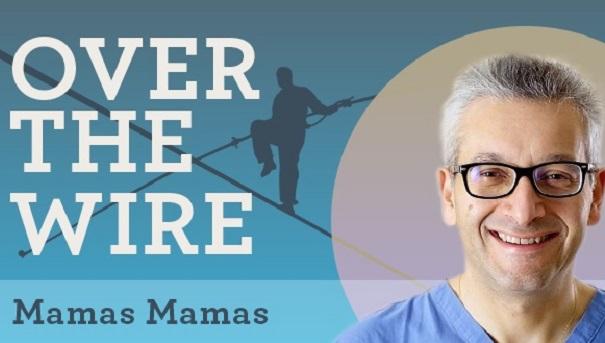Trust and Transparency: From Ancient Rome to Guideline Committees
Who is an “expert” for a guideline-writing group? To achieve true diversity for practice guidance, let’s shine a light on the process.

Ancient Romans really understood the real and perceived dangers of conflicts of interest. One of the key roles of the Roman Senate was to serve as an advisory council, passing decrees called senatus consulta, which constituted "advice" from the Senate to the magistrate classes. While these decrees were not legally binding, they were usually obeyed in practice. To serve in the Senate, senators were prohibited from banking or any form of public contract, could not own a ship that was large enough to participate in foreign trade, and were not paid a salary. Senators were not elected; they were appointed from the elected magistrate classes.
Almost 2,000 years later, guideline committees tasked with devising practice recommendations in medicine have this in common with Ancient Rome: they are appointed, not elected and produce modern day recommendations that, whilst not legally binding, form the framework for how we practice. Conflicts of interest among guideline committee members have received widespread attention, but the processes around their appointment have not.
TCTMD recently reported that 80% of European Society of Cardiology guideline writers have direct financial conflicts of interest with industry, generating many discussions around the pervasiveness of such conflicts amongst members of guideline committees via threads and polls over Twitter. Conflicts of interest include direct industry payments to individuals or institutions, indirect payments through research grants, or less-tangible support such as meeting travel or educational programs provided through societies or conferences that have received grants from industry. Conflicts also exist by virtue of our jobs, where our income depends on the ability to deliver an intervention via our subspecialty interests, particularly in fee-for-service healthcare systems. The English philosopher C.E.M. Joad understood this well. “Doctors have a monopoly of medicine just as parsons have of God,” he reasoned. “You can’t get a parson to admit the arguments of an agnostic, because his salary depends on his not letting the agnostic refute him.” That example could equally apply to members of guideline committees.
Professional guidelines are important: they provide a practical and ethical framework for decision-making in clinical practice that’s informed by the best available evidence and, when this is not available, by expert opinion from individuals chosen for their expertise. It is said that “where facts are few, experts are many.” This is particularly relevant in guideline committees, where there are many individuals who adopt the role of the expert and end up having significant influence on the nature of the clinical recommendations they deliver.
But how should we choose the experts who serve on such committees and what exactly do we mean by expert? Is he or she someone who has published significantly in the arena around which the guideline is being developed, and if so, what or who defines what is considered “significant” or whether this work has had clinical impact? What if they have little or limited clinical experience actually managing complex patients? On the one hand, there are the key opinion leaders who have run the landmark clinical trials, who know the data inside and out. But these physicians and academics are also likely to be the ones “conflicted” by the perceived importance of their research and the funding support they received to get the trials done. On the other hand, there are the physicians who are the most clinically active, recognized by their peers as being the most technically gifted in delivering an intervention or guiding care, too busy with the hands-on treatment of patients to publish the original peer-reviewed work that is often considered a marker of expertise. The old adage goes: “Those who can, do. Those who can’t, write.” Last but not least, who ultimately makes that determination of another’s expertise to put together the guideline committees?
The Council of Medical Specialty Societies’ principles for the Development of Specialty Society Clinical Guidelines state: “Guideline panels should include knowledgeable, multispecialty/disciplinary development individuals,” but they don't specifically detail a process for assessing whether individuals are experts, what criteria to use, or how they should be appointed. A cursory look across many societies’ disparate guidelines suggests that the same individuals are authoring guidelines across a range of clinical settings in cardiology; it seems unlikely that their contributions on multiple guidelines reflects a breadth of clinical expertise. My guess is it’s not just what you know, but who, as well as which working group you happen to be a member of, or chair.
Appointment of individuals to guideline committees currently lacks transparency, particularly given the absence of published or public criteria used to select contributors for each document. For job postings, employment law requires that for a transparent and competitive process, the position must be publicly posted, clearly describing the role and listing essential and preferred criteria. No such processes are used to appoint members to guideline committees, whose recommendations we rely upon on daily to inform our professional interactions with patients.
Diversity and inclusion are also critical, with the welcome creation of task forces to increase representation and diversity throughout our professional societies. But the lack of transparency associated with selection process in the past remains. It is hardly progress if, instead of appointing individuals from a limited demographic through opaque means, we are now appointing a more-diverse panel through a similarly clouded approaches. Whilst some of our professional societies have open processes for joining committees through means of either self-nomination or nomination by others, no such processes exist for many guideline committees.
If we are looking to produce guidelines that are internationally relevant to healthcare systems across the globe, then those who serve to produce such guidelines should reflect and represent the healthcare systems the guidelines serve. That means having transparent processes in which stakeholders from different healthcare systems can apply, where experts are chosen based on publicly available, prespecified criteria in an open and competitive process. Only then will we find a broader group of experts that extends beyond the narrow confines of many guideline committees today. If a process is fully equitable and transparent, diversity will follow. Whilst such processes may not help us get any closer to who is and isn’t an “expert,” it will at least help us refine the criteria we use to define expertise and, ideally, will allow for more trust and transparency in our guideline process and the recommendations that follow.
Over the Wire is a first-person blog and does not reflect the editorial position of TCTMD.
Mamas Mamas, BMBCh, DPhil, is the Senior Clinical Editor at TCTMD. He is the Clinical Director for the Centre for…
Read Full Bio




Comments